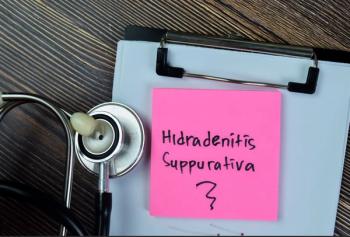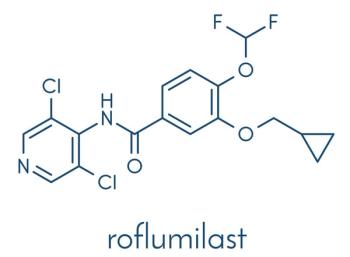
Dry Cough, Rash on Legs
Patient is 54 y/o man; the cough has been present for 2 weeks, the rash on the lower extremities for 2 months; the rash is getting worse. What's your dx?
Patient history
A 54-year-old man with a history of diabetes on metformin comes to the hospital complaining of 2 weeks of dry cough and 2 months of a bilateral leg rash, seen in Figure 1 (please click to enlarge). The rash is not painful but it is pruritic, and is gradually getting worse. An OTC antifungal cream has not helped. The areas affected are mostly on the feet, shins, and calves. The patient denies any fever or any exposure to new foods, detergents, medications, or skin care products. He also denies chest pain, shortness of breath, leg swelling, or other complaints.
Examination
Vital signs were normal. Physical exam was normal except for one lesion on the right ankle and four of them on the left foot, shin and calf. Two of the lesions are shown in the image below.
Initial differential diagnosis
• Eczema
• Allergic reaction
• Syphilis, the great imitator
Questions
1. What does the case image show?
2. What should you do next?
Answers
1. What does the case image show? Necrobiosis lipoidica
2. What should you do next? Send him to a dermatologist.
Discussion
Necrobiosis lipoidica is an idiopathic skin condition that most commonly affects patients with diabetes, but also sometimes those with rheumatoid arthritis. Skin lesions are well-demarcated plaques that are typically on the lower extremities, especially the shins. They are usually asymmetric and typically have a yellowish center.
Biopsy can be obtained when the clinical diagnosis is unclear. Treatment is with high-potency topical steroids. If this is ineffective, depot steroid injections or phototherapy with UV-A light can be tried. For more details, click on the sample page in Figure 2 above, then focus on highlighted area.
Conclusion
Patient was discharged home on steroid cream and did well.
Newsletter
Enhance your clinical practice with the Patient Care newsletter, offering the latest evidence-based guidelines, diagnostic insights, and treatment strategies for primary care physicians.





















































































































































































































































































